Fighting the Factory the Arts and Crafts Movement Answer
Emerging in the late 19th century Victorian England, the Arts and Crafts movement was more than just a nouveau style in decorative arts. It was born in reaction to Industrial Revolution, reevaluating the concept of hand-craftsmanship in the lite of industrial manufacture, mechanization and mass-produced objects of junior quality.
The movement was rooted in the ideals of pre-industrial times, a response to the anxieties that did not simply concern aesthetics merely besides fundamental social problems like industrial labor, capitalism, and breach of people from their work. It was also one of the outset art movements that blurred the line between fine arts and crafts and due to this revision of traditional art bureaucracy that allowed a greater involvement of women practitioners.
The story of female artists in Craft motility is an interesting 1 and in this article, nosotros will explore their paradoxical position within it.
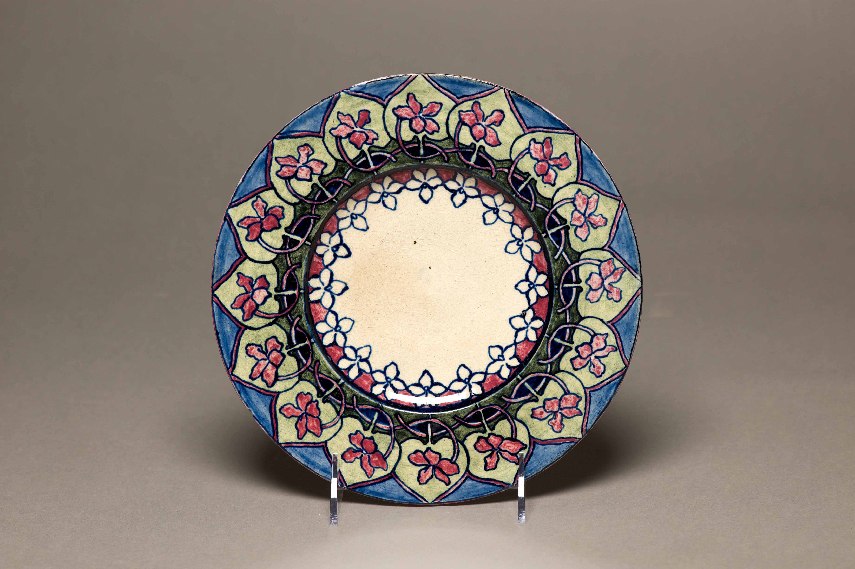
Arts and Crafts Movement – Historical Context
In the earth of art, the Arts and Crafts movement is assigned every bit fashion in decorative and fine arts, active between 1880 and 1910 inspired by the strong Anglo-Saxon tradition of adroitness and spread internationally from Great U.k. and Europe to North America, Commonwealth of australia and Japan in the 1920s.
At the time of the beginning of the movement, in the concluding decades of the XIX century, societal context in Great United kingdom was predominantly influenced by the Industrial Revolution and fin-de-siecle fascination with new technologies, which brought the commercialization to the craftsmanship. New, industrially made design patterns, elements of interior and crafts were cheaper and simplified versions of artisanal crafts and soon overflown the market place, all interiors and the art scene in general.
Contemporary critics plant that the new tendency was endangering the fine art scene with its awkward commercial aesthetics and they detected the need of rediscovering new principles of beauty within the art and crafts production and moreover for re-establishing of humanistic values of pre-industrial times. The major event of the end of the 19 century, meaningful for the birth of the movement, was the Corking Exhibition of 1851 in Crystal Palace at Hyde Park in London from 1 May to eleven October 1851 that shown items which, according to critics were as well vulgar artificial, industrially produced and totally ignored the qualities and the performances of the materials used.
The ornament was the crucial point of disagreement between craftsmen and architects from one paw, and the industrials from some other. Influential authors of the epoch agreed in the thesis that the ornament should be secondary to the decorated detail, and which is more of import to be conceptually connected and derived from the material qualities, and inseparable from the design vision of a whole. Suggestions nearly the future of the design were in direction of the revival of craftsmanship and (re)humanization of the design process.
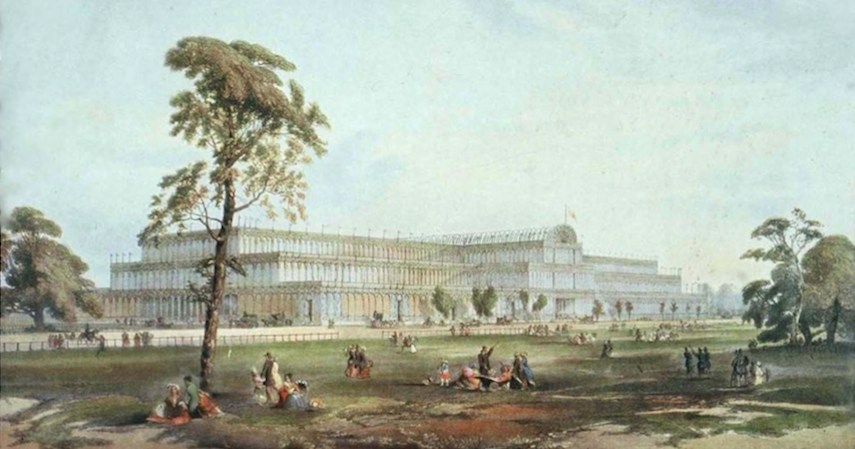
Theory, Philosophy and Social Background of the Movement
Before we move to the discipline of the mean solar day, let's see some of the characteristics of Arts and Crafts movement and its theoretical background. Its ideology derived from disquisitional thoughts of 2 influential figures – fine art critic John Ruskin and writer and designer William Morris.
The effigy of John Ruskin was essential to the theoretical background and directly followed by the birth of Arts and crafts movement because his writing on art was of great influence on public gustation in Victorian England. Furthermore, in his fine art essays, he addressed social problems and the context of the Industrial Revolution, which brought social consequences to the workingmen, with special accent on craftsmen and their welfare.
Ruskin developed the ideas of rediscovering the craftsmanship and restoring the pre-Victorian ideals of beauty, which were farther developed in writings and art practice of William Morris, a respectful designer of the time. Ruskin's idea of "servile labor", the issue of industrial capitalism, was embraced past Morris and put in exercise in his design philosophy. Ruskin and Morris placed a neat value on the production past hand, believing that factory work alienated workers from the fruits of their labor, depriving them of satisfaction and joy.
Furthermore, they criticized the rising of the consumer society, consumer goods of poor design and quality that were entering the market but also museum exhibitions. Their philosophy was influenced past populist and socialist ideas and consequently, information technology resulted in the vision of art and blueprint fabricated "by the people and for the people" with a special focus on thejoy of adroitness. Their aesthetic and critical ideas shaped the philosophy and style of Arts and crafts move and new design tendencies.
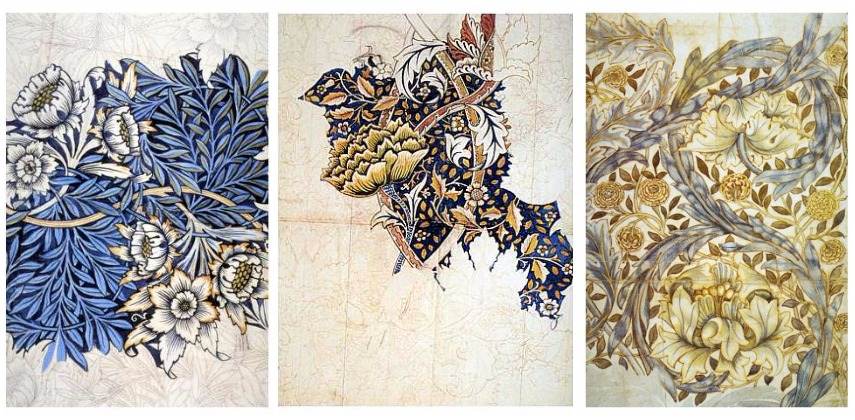
Characteristics of Style
Forth with Fine art Deco, decorative style we discussed some fourth dimension agone, Arts and Crafts Movement could be identified as the earlier prequel to Art Nouveau,Modernism and Modern Fine art in full general, since it is relied on the unity of artistic media and it was oriented towards the production of functional objects like furniture, with loftier aesthetic value.
Therefore, artists and manufacturers are encouraged to carelessness the excessive Victorian ornamentation and to discover the clarity of lines and shapes focusing on the material properties and qualities. New aesthetics brought the objects that were based on clear natural forms, patterns accept repetitive grapheme and creatives were insisting on elegant, vertical and elongated forms, with the strong reminiscence on the pre-Victorian, belatedly medieval, renaissance and gothic influences.
Décor elements were reduced to cleanse the lines and to purify the forms, to emphasize accordance of the materials and global sense of the harmony in interior design. Long before the famous maxim of Mies Van Der Rohe "The Less is More", William Morris stated "the less, the improve", and paved the official management to modern design and the philosophy of Modernism.
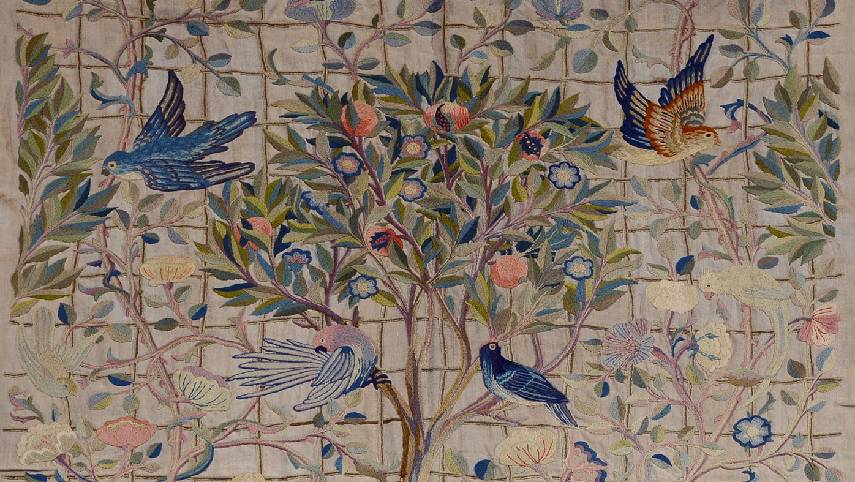
Craft Exhibition Society
In 1887, the creatives gathered around the Move formed the Arts and crafts Exhibition Society to display decorative arts and its achievements, in order to augment the field of fine arts and include the new decorative practices. Promotion of the new philosophy was held through the annual exhibitions at the New Gallery in London in iii years from 1888 to 1890 and despite its commercial debacle were of not bad importance for the hereafter life and influence of Arts and Crafts, outset in United kingdom of great britain and northern ireland and and so abroad.
Later on the first three years of public engagement of the practitioners through the museum and gallery exhibitions, the newly formed society published the Arts and Arts and crafts Essays in 1893, and writers include the illustrator and designer Walter Crane, president of the Society, as well as William and May Morris, T. J. Cobden-Sanderson and Ford Madox Dark-brown. Following exhibitions were more than and more successful, and the crown was the retrospective exhibition of William Morris in 1899.
The Society entered the new century with new and productive exhibitions in 1906, 1910, 1912 and 1916, activating different locations and spreading the move across the country. 1 of the major results of these collaborative activities of the prominent creatives in United kingdom is setting the book of standards inside the newly formed Design and Industries Clan in 1915, in order to straight touch and better national industrial standards.
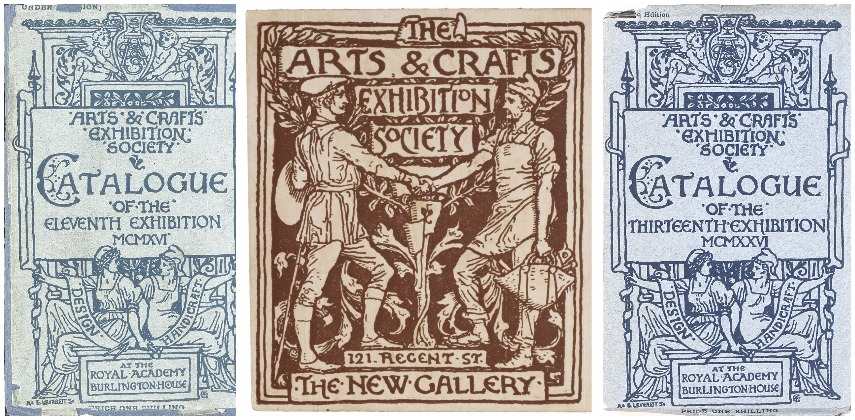
Arts and Crafts Movement – Influences
The Arts and Crafts Move broadly influenced the fields of fine and applied arts, architecture all decorative art and nouveau practices as well every bit craftsmanship at the turn of the century both in Continental Europe and N America, likewise every bit Australia and Japan.
In Europe, many movements simultaneously flourished every bit reaction to the industrialization of the craftsmanship - the aforementioned Art Nouveau,Art Deco or Fashion Moderne in France or the Viennese Secession. Among those influenced past the Arts and Crafts Move, there is the folk-art movement, which affirmed vernacular building style in Hungary, and romanticism in Finland and Russia.
Before long after the 1876 Centennial Exposition in Philadelphia, the Craft Motion flourished in New York State Area and then its principles entered the formal education. In the following catamenia from 1910 to 1925, in architecture, design and decorative arts, the philosophy and the values of the movement spread through the magazines and influenced the new "Craftsman"-mode housing, adaptation of the European Arts and Crafts philosophy for the American context.
The American Craftsman became predominant way and with the concept of well-decorated middle-class homes straight influenced so-chosen Chicago "Prairie Schoolhouse" and exercise of Frank Lloyd Wright, George Washington Maher among others.
Across the world, in Japan, the return of tradition in the 1920s is seen as influence of the British and American Arts and crafts Motion and the writings of Morris and Ruskin in artwork of Yanagi Sōetsu, creator of the Japanese Folk Art Move.

Controversial Position of Female Artisans
The Craft movement was at its superlative in the years betwixt 1880 and 1910 in Western Europe and the U.s.a., as well spreading to Japan in the 1920'southward. During those years, a big number of designers, architects, manufacturers, and workshops adopted the ideas proposed by William Morris and John Ruskin.
Amidst those art practitioners, many were women. However, the position of women workers in the field of Art and Craft is a controversial 1. Although there were many female artisans, their artwork is withal under-recognized compared to their male person peers. If we want to improve empathise the role of female creatives in this motion, we should take a closer look at the social and cultural position of women in the Victorian era.
Affections in the House
"Angel in the Firm" is the term almost frequently used to describe the ethics of a middle-class adult female in the Victorian era. Innocent and fragile, this angel-wife would spend all of her days in the domestic environment. She was devoted to her husband, passive and submissive creature whose activities revolved around social duties and household management.
Up until the mid-nineteenth century, paid work was considered pejorative for middle-class women and at that place were but several professions that were considered appropriate. Arts and Crafts with its orientation towards the domestic environment, bootleg goods, emphasis on the skills that were widely considered feminine allowed greater involvement of female artisans.
On one paw, women were encouraged to participate, as craftwork was seen as an extension of their traditional roles. On the other, their work remained nether-recognized considering women were considered executants of the designs created past men, rather than talented creators themselves. Ii influential Arts and Crafts guilds, Order of Handicraft and Fine art Workers' Guild, excluded women from their membership.
Craft move was paradoxically dependent on women'south involvement and hostile towards their work. Regardless of the inequity, it opened a window for female fine art and craft workers, allowing them to work within the frame established past the patriarchal society, but to also start being paid for their practise and to expand their influence outside of habitation which was a big stride towards the idea of emancipation.
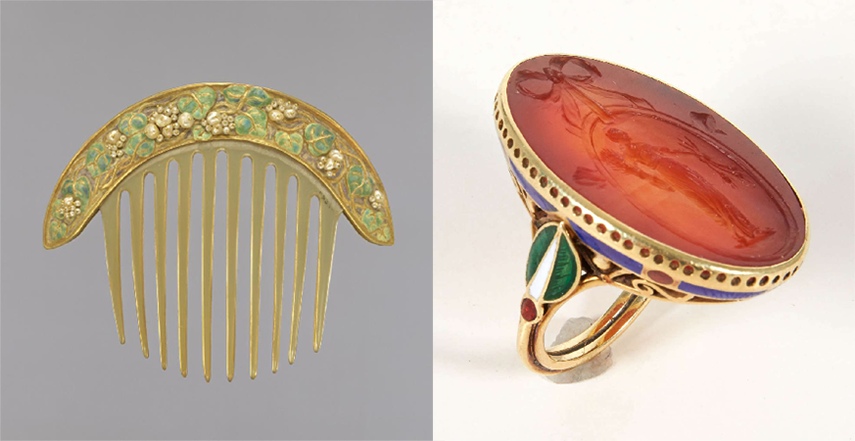
Prominent Women Artists and Female person Art and Blueprint Associations
Although fine art histories mostly focus on male person designers and guilds, there were several associations created by women for women that have influenced the further development and allowed greater exposure to female creatives.
One of the about influential figures in Arts and Crafts motion was Mary "May" Morris, the daughter of William Morris. Although her engagement stayed in the shadow of her male parent's for many years, May Morris' contribution to the motility cannot be overlooked. She was among the all-time embroidery creators and jewelers in the Arts and Crafts movement in Britain.
As a designer and the executant of her work, she opposed the thought of labor partition showing that women are non limited to the subordinate positions. She also rebelled confronting the idea of female exclusion from the art guilds and established Women'south Guild of Arts in 1907 providing a much-needed platform for female artisans to collaborate, make connections and gain professional condition.
In America, the situation was slightly meliorate for women, as the popularity of Craft motility coincided with the progressive era and the idea that economic independence was desirable for women. In Boston, Sat Evening Girls Order founded the Paul Revere Pottery, assuasive the girls to earn practiced wages from their crafts.
Another important clan of female person art workers was Newcomb Pottery under the auspices of the H. Sophie Newcomb Memorial College, an educational institution for women. In improver to pottery and embroidery, in that location were influential female creators working in jewelry design. Florence Koehler and Marie Zimmermann are among the all-time-known female jewelers in Craft movement.
When it comes to Craft architecture nosotros need to mention the figure of Julia Morgan who was one of the pioneering professionals in the field, the first adult female to be admitted to the program at fifty'École nationale supérieure des Beaux-Arts in Paris and the beginning woman builder licensed in California.
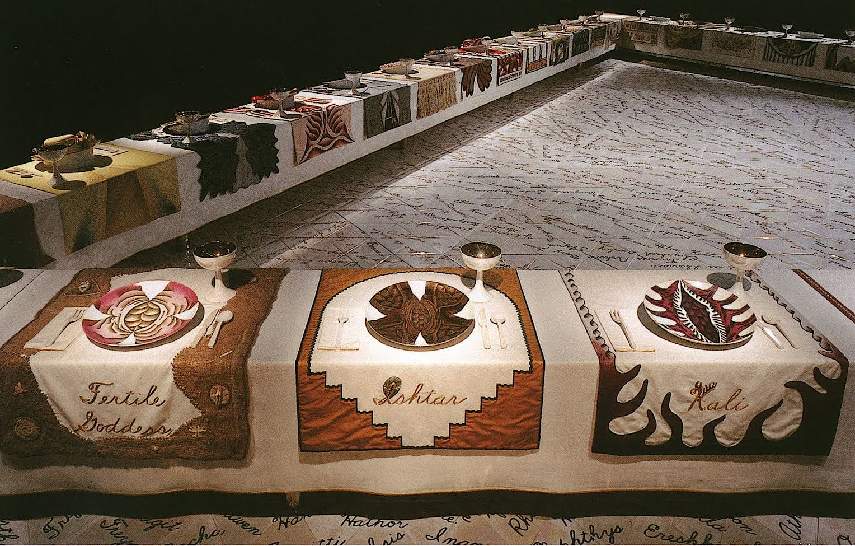
Women in Arts and Crafts Motility – Significance and Heritage
In that location are two schools of thought when it comes to the interpretation of Craft move in relation to the female person art product. Information technology is true that the movement was sympathetic towards women and many woman authors became accomplished professionals, able the compete with their male person colleagues. Art education for women was also encouraged at the end of the 19th and the beginning of the 20th century, as more girls were allowed to enter art schools.
However of import Arts and Crafts movement was for the educational activity and emancipation of women, it also implicitly kept the division between fine arts and crafts. Women were encouraged to participate in decorative arts and at the same time, they were deprived of fine art education that was reserved for the male members. It wasn't until the seventies and the emergence of Feminist Art Movement that female creative person began their fight for the equal place in the art world by addressing the traditional notions of crafts and decorative arts and the idea of "female aesthetics".
Judy Chicago's installation The Dinner Party especially focuses on the idea of "domestic art" and the way women'southward work stayed undervalued through the time.
The Arts and Crafts movement has a conflicting status when it comes to fine art by female authors, but remains a significant source of inspiration in contemporary women's art, whether it is being praised, questioned or critiqued.
Edited past Maria R.

Editors' Tip: Women Artists of the Arts and Crafts Motility, 1870-1914
In her book Women Artists of the Arts and crafts Movement, 1870-1914, Anthea Callen, professor-elect in the section of the history of art, University of Nottingham, and formerly research professor in the history of art, De Montfort University, Leicester, deals with less known and brings "her-story" of the Art and Crafts Motion. Callen chose to conduct research on women'due south fine art and craft practices without the strict hierarchical structure or insisting on major roles and influential artworks in order to testify a broader presence of women, the intensity of their work and its political significance.
Featured images: May Morris - Embroidery; Julia Morgan - Merrill Hall, California. All images used for illustrative purposes only.
Source: https://www.widewalls.ch/magazine/arts-and-crafts-movement-women-artists